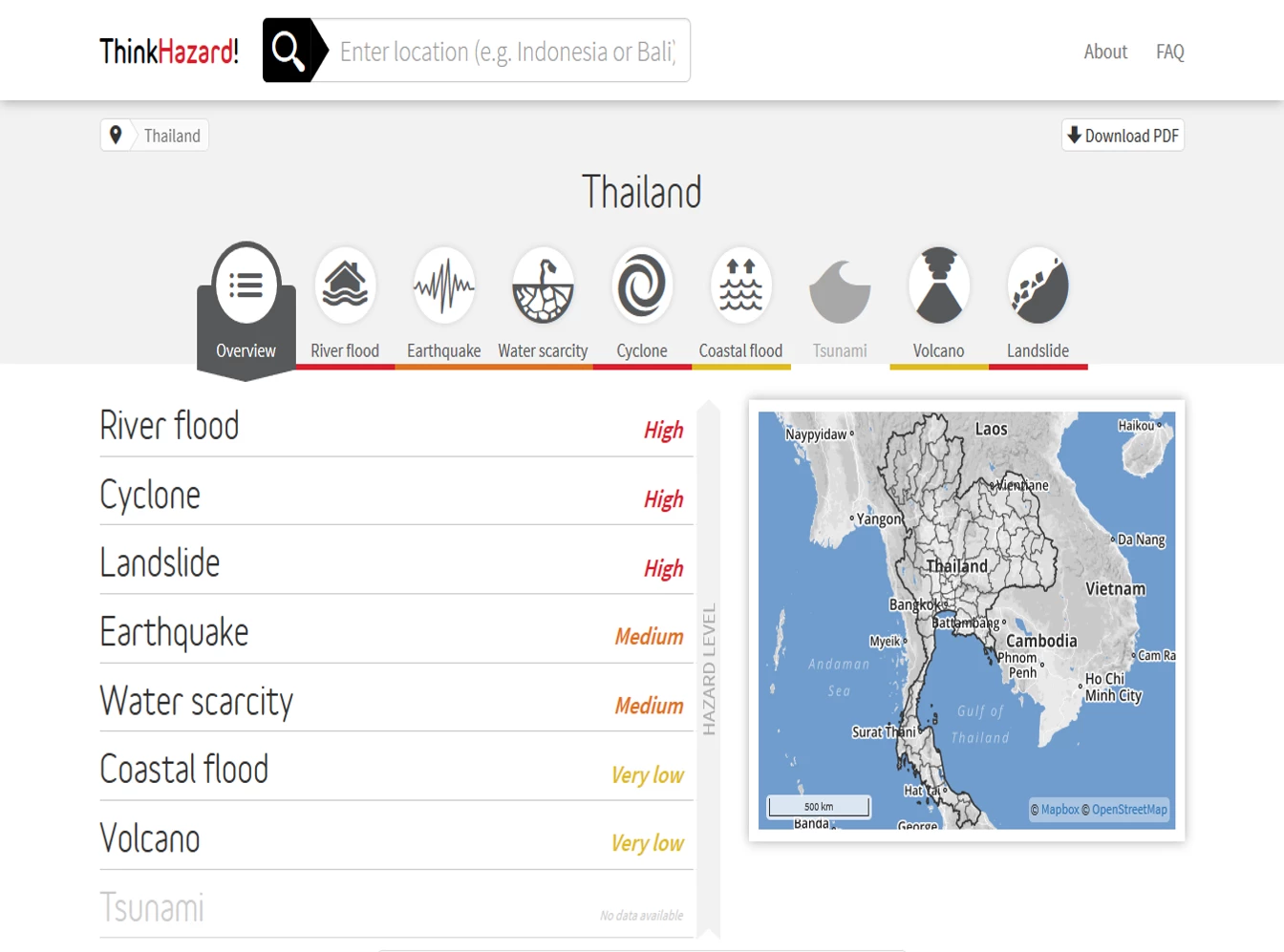These days, it’s rare to open a newspaper (or scroll through a blog) without reading about a disaster striking somewhere in the world. Often, these disasters affect the very same countries that we support in our projects every day at the World Bank, and we watch helplessly as decades of development progress are erased within minutes, hours, or days. Disasters cause substantial losses in every country the World Bank operates in. It is truly not a question of if, but when, the next disaster will strike.
It’s important, then, that when we, along with our private-sector and government partners, always ask, “are our projects resilient to cyclone? What about extreme heat, or volcanic eruptions? In 50 years, will this project still be protected from increasing instances of flooding, landslides, and drought?”
The World Bank Group recently committed that all International Development Association (IDA) and International Bank for Reconstruction and Development (IBRD) lending operations should incorporate resiliency to disasters and climate change.
This, however, does not mean that project leaders and government officials suddenly need to become experts in seismic risk or landslide modeling. The World Bank-supported Global Facility for Disaster Reduction and Recovery (GFDRR) has created a platform called ThinkHazard! that translates the latest and most robust science on 11 different natural hazards into easily accessible and digestible information to determine the potential risk to projects from disasters and climate change. More than just showing the risk, ThinkHazard! also gives advice on actionable items to make projects more resilient – and where to get more information.
ThinkHazard! was originally launched just over a year ago, and has received more than 140,000 visitors from more than 200 countries. It has been integrated into the WB Operations Portal, and development agencies across the globe regularly use its resources.
The GFDRR team upgraded the platform on July 1, revealing expanded hazard coverage and a host of new tools and resources. Now, ThinkHazard! includes translation to Spanish and French, new and higher resolution data, an API (to improve seamless integration with other systems such as the Climate Change Knowledge Portal), contact details for national authorities, and enhanced visualization tools.
What happens when projects are found to be vulnerable? Take a look at the platform that underpins ThinkHazard!: GeoNode (a geospatial data platform supported by GFDRR), which hosts more than 500 natural hazard datasets to view, download, and use for more analyses. If it becomes clear that disasters and climate change could have a substantial impact on the sustainability and proposed development project objectives, then there are expert teams across the WBG who can help with more advanced analytics and expert advice – from Decision Making Under Uncertainty to the socio-economic modeling of resilience to specific climate and disaster risk modelling (e.g. Afghanistan) and cost-benefit analysis of different solutions.
Next time there’s news of another disaster, we must think about a project’s resiliency. In the chaotic aftermath of an earthquake or cyclone, are the schools and hospitals are still open and functioning as intended? Were transport networks used for evacuation and are they able to move humanitarian support and facilitate reconstruction? Are government functions robust in the days, months and years required for reconstruction? With the development of ThinkHazard!, we hope that the answer will be ‘yes.’



Join the Conversation